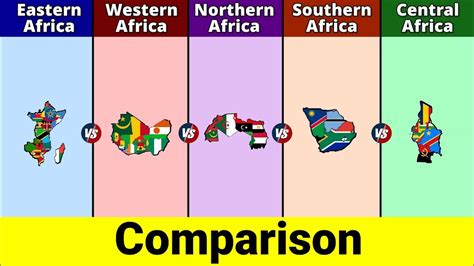Africa, a continent of immense diversity, showcases a fascinating tapestry of cultures, traditions, and landscapes. While often perceived as a monolithic entity, Africa comprises vast regions with their unique characteristics, each carrying significant historical, economic, and social implications. Two such regions that stand out for their contrasting and yet interconnected nature are East Africa and West Africa.

Geographical and Demographic Dynamics
Geographically, East Africa encompasses countries such as Kenya, Tanzania, Uganda, Rwanda, and Burundi. It is characterized by a predominantly coastal belt along the Indian Ocean, with vast grasslands, the iconic mountains of Kilimanjaro and Mount Kenya, and the famous Great Lakes region. In contrast, West Africa consists of nations like Nigeria, Ghana, Ivory Coast, Senegal, and Mali, stretching from the Atlantic coast eastward towards the Sahara Desert. Its terrain includes dense tropical forests, savannas, and the vast Niger River basin.
In terms of demographics, East Africa has a population of approximately 224 million, with a relatively high rate of urbanization. West Africa, on the other hand, is considerably more populous, with an estimated 374 million inhabitants. Both regions exhibit a diverse linguistic and ethnic landscape, reflecting the intricate cultural heritage of Africa.
Historical Trajectories
The historical trajectories of East and West Africa have been shaped by distinct experiences and influences. East Africa has a long history of maritime trade with the Middle East and India, which introduced Islam to the region. The coastal cities of Mombasa, Zanzibar, and Kilwa Kiswani developed into vibrant Swahili trading centers. In contrast, West Africa was heavily influenced by trans-Atlantic slave trade, leaving a profound impact on its social and economic development. The region was also the cradle of powerful empires, such as the Ashanti, Benin, and Songhai, which left a lasting legacy in the area.
Economic Profiles
Today, East and West Africa present contrasting economic profiles. East Africa has experienced significant economic growth in recent years, driven by factors such as tourism, agriculture, and the development of infrastructure. The region has also made strides in regional integration through initiatives like the East African Community. West Africa, on the other hand, faces challenges related to poverty, inequality, and conflicts in some areas. However, the region boasts vast natural resources, including oil, gas, and minerals, which have the potential to fuel economic development.
Cultural Encounters and Influences
Despite their differences, East and West Africa have been interconnected through cultural exchanges and influences. The Swahili language, a Bantu language with heavy Arabic influence, is widely spoken in East Africa and serves as a lingua franca in the region. This language has facilitated trade and cultural exchange between East Africa and the wider world. In West Africa, the influence of Islam has given rise to a rich artistic tradition that includes architecture, music, and literature.
Table 1: Demographic Comparison
| Region | Population (millions) | Urbanization Rate (%) |
|---|---|---|
| East Africa | 224 | 33 |
| West Africa | 374 | 44 |
Table 2: Economic Indicators
| Region | GDP per Capita (USD) | GDP Growth Rate (%) |
|---|---|---|
| East Africa | $1,563 | 4.8 |
| West Africa | $1,627 | 3.5 |
Table 3: Cultural Heritage
| Region | Major Languages | Significant Cultural Influences |
|---|---|---|
| East Africa | Swahili, Amharic, Oromo | Islam, Christianity, Bantu traditions |
| West Africa | Hausa, Yoruba, Igbo | Islam, Christianity, Animism |
Table 4: Natural Resources
| Region | Key Resources |
|---|---|
| East Africa | Tourism, agriculture, minerals |
| West Africa | Oil, gas, minerals, cocoa |
Conclusion
East and West Africa, while distinct in their historical, economic, and cultural profiles, are inextricably linked through shared experiences and the dynamic forces of globalization. Understanding the contrasts and connections between these regions is essential for comprehending the complexity and diversity of the African continent. As Africa continues to shape its future, the interplay between East and West Africa will undoubtedly play a pivotal role in determining its destiny.
